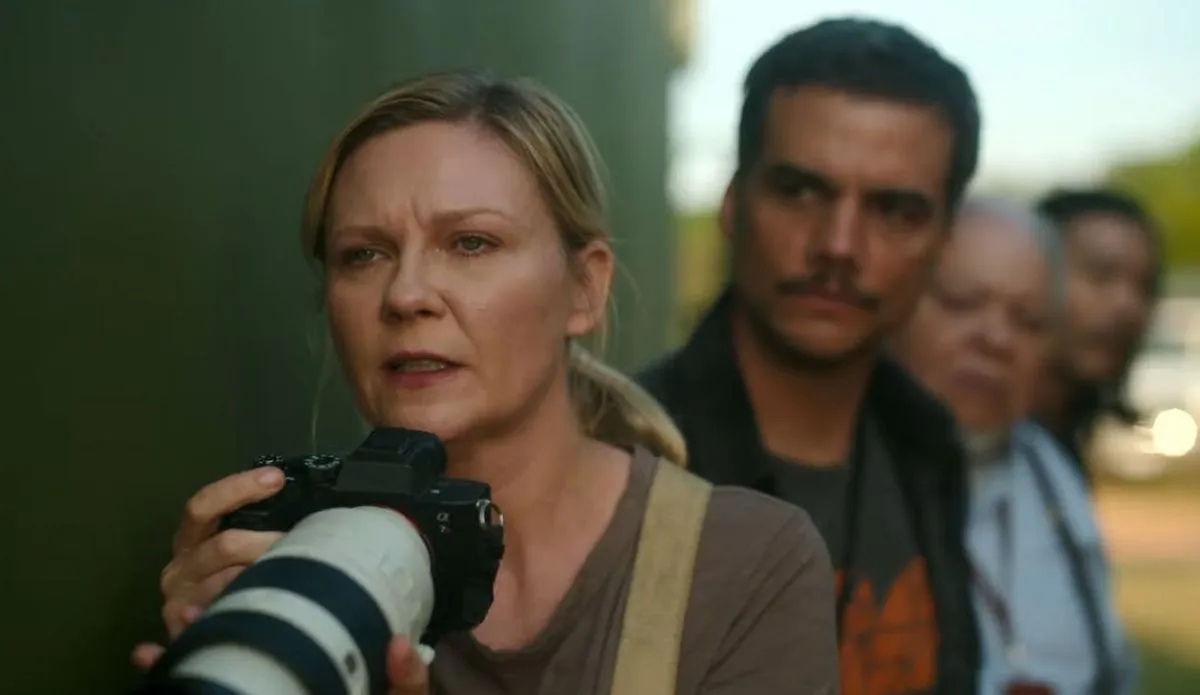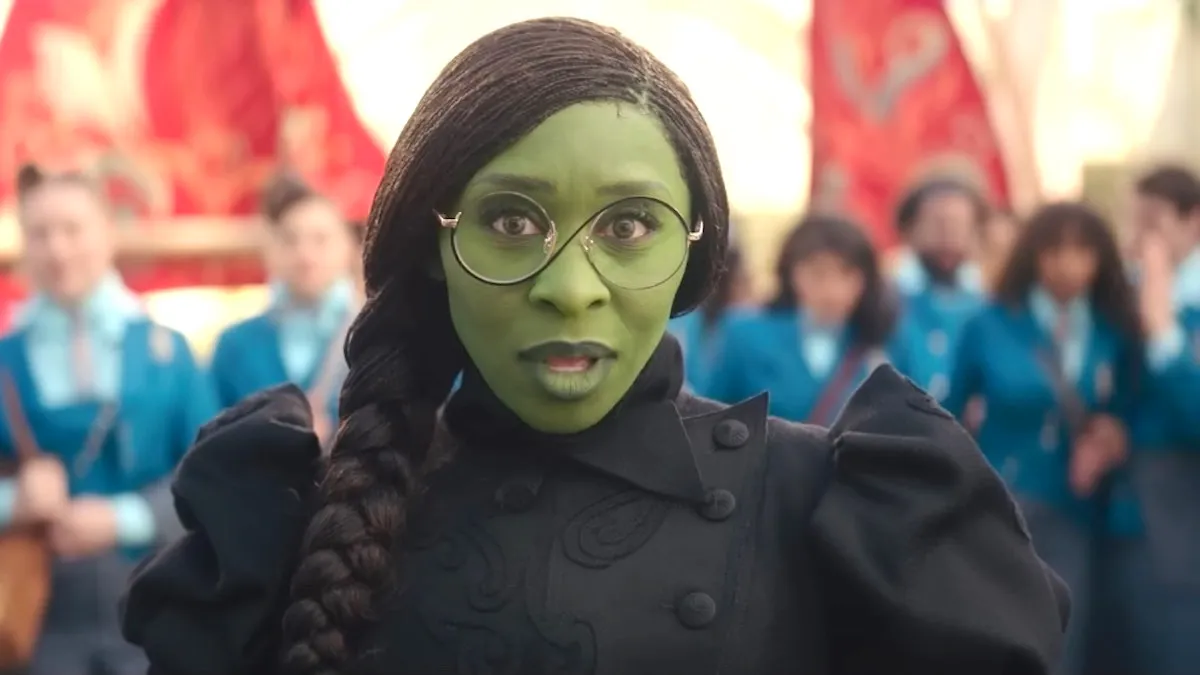Writer and director Alex Garland makes a fascinating narrative choice in his new film Civil War: He tells the story of a modern American civil war not from the perspective of a soldier, but through the eyes of a journalist. That framing highlights an unsettling truth about the way we consume war stories.
Warning: this article contains spoilers for Civil War.
Early in the film, we see a montage of all the war zones photojournalist Lee (Kirsten Dunst) has covered, along with all the atrocities she’s witnessed. People are shot, executed, set on fire. Each time, we see Lee snapping photos, her face obscured behind the camera lens. Garland shows us that one specific shot again and again: Lee’s hair and hands visible around the camera, while her face itself is hidden.
The shot speaks to Lee’s own desensitization, of course. She numbs herself to the horrors she’s seen (until she finally breaks down in the film’s final act). But there’s another layer to those shots: We, the audience, are also behind that camera. Every photo Lee takes is offered up for consumption by a faceless, anonymous public, whether it’s the fictional public in the film or real audiences watching the film’s fictional story. The people who look at her photos see other people suffering, but those who are suffering never see the people viewing their photos. It’s a relationship that’s inherently off-kilter.
At one point, Lee muses to her colleague Sammy (Stephen McKinley Henderson) that she’s spent her career taking photos of war in order to send a warning. “Every time I survived a war zone, I thought I was sending a warning home,” she says, watching gunfire in the distance. “‘Don’t do this.’ But here we are.” Lee has spent her career hoping that her photos were a deterrence to war, but it seems they’ve accomplished nothing.
It’s impossible to see Civil War without thinking of the conflicts going on around the world right now. In my case, I thought about Gaza. Right now, Gazan journalists are frantically sharing photos of the genocide Israel’s far-right government is committing against their people. Some of their photos are incredibly graphic and upsetting. They’re not doing it to be sensationalist, though. Instead, they urgently need the rest of the world to see what’s happening. Countless people around the world are speaking up and organizing to end the genocide, but countless more end up being the face obscured by the camera: anonymous, passive, and removed.
Photos can be a call to action—to stop violence that’s happening now, and to prevent future violence from erupting. If they don’t achieve that, then they end up being little better than voyeurism. If we don’t take some form of action, however humble, then we end up as passive consumers of violence—and that makes us complicit in every atrocity we witness.
Could Civil War serve as the warning that Lee wishes her photos could be? I wouldn’t hold my breath. At best, it serves as a rebuke against the way we observe and excuse violence over and over again. At worst, it could represent Lee’s worst fears come to pass.
(featured image: A24)










Published: Apr 30, 2024 02:52 pm